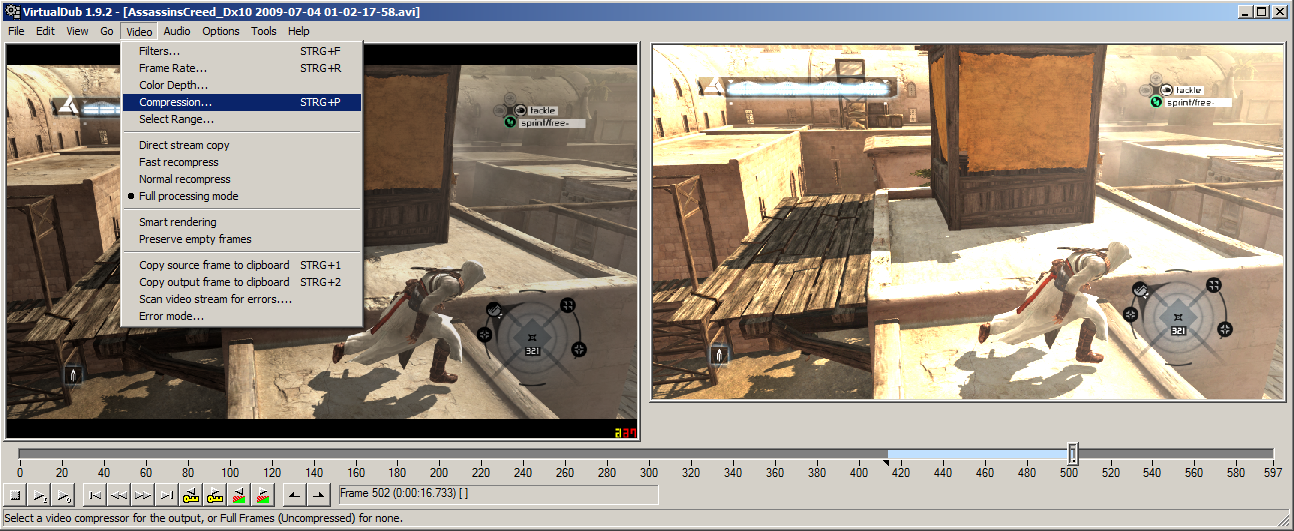How To Install Lame Mp3 Codec In Virtualdub
Hello guys, I'm new here. Can somebody please tell me how to properly install the Lame codec to be used in Virtualdub on a Windows XP 64-bit machine? I am having trouble integrating it in both the 32-bit and 64-bit versions of Virtualdub. For the 32-bit version of Virtualdub (1.8.8 build 30091) I installed the and the (exe + dll files) but Lame does not show up in the codec list of Virtualdub. I get the same result when using the same downloads for the 64-bit version of Virtualdub. No error messages, but nothing appears.
Apr 3, 2017 - LAME has come a long way and the updated or update of LAME is now available. There has not been much work done on it over the years.
In both cases I've tried copying the lame.dll file into Virtualdub's folder, even to the system32 folder, everything to no avail. I think I found a 64-bit version of Lame (I forget where I got it), but that did not seem to work either. Virtualdub crashed when I opened the compression menu, due to an error related to the Lame codec. Please advise.
Introduction: This guide is in response to diablogod's FPVOD guide. Basically, Windows Movie Maker sucks for encoding and the wmv codec is just horrid. X264 and Lame are two of the most popular video and audio codecs and are just much better in general: better quality to speed ratio and quality to filesize ratio. Not to mention x264 is multithreaded optimized for you people with quad cores. Things you will need: VirtualDub (latest 1.8.8) x264 VfW codec (latest r1145) Note: Make sure you get the VfW version of the x264 codec. If you download the.exe version, you'll have to use it through a command line, which I won't cover here and is a bit more technical. VfW stands for Video for Windows.
It basically means you can use VirtualDub instead of the command line. Lame mp3 codec (dunno what the latest is) You can get it from where ever but I got mine from the K Lite Codec pack (latest 4.8.5) Be sure to download the full version (there's basic, standard, full), and install it with the setting 'Lots of stuff.' -Thanks Splinty Step 1: Joining your.avi files So in your fraps folder, chances are you have more than one file since you're games usually are longer than 1-2 minutes.

Good news is that VirtualDub can join.avi files. Bad news is that you have to join them one by one, a bit tedious if you ask me, but hey it's a free program.

It's highly recommended you join your avi files before you encode (if you're doing 2pass) for reasons I will discuss later. So you open up your video with VirtualDub. Then you drag the bottom slider all the way to the right.
Then you click File -> Append Avi Segment. Then you open up your next video and repeat.
After that click File -> Save as Avi and save it somewhere and you're done. Step 2: Converting the frame rate Click on Video -> Frame Rate -> check Convert to fps: -> pick a number Usually it's 25 or 30fps but I'll leave that up to you to decide.
Step 3: Setting up the video compressor Click on Video -> Full processing mode. This will make sure the video gets encoded and you're not just making an exact copy of your video (direct stream copy). Next click on Video -> Compression If you setup x264 correctly, the codec will be there. Mine is listed as x264vfw - H.264/MPEG-4 AVC codec. Click on it and click Configure. A box with a load of options will pop up.
The first thing you wanna do it click on the 'single pass' drop down box and select 'Multipass - 1st pass.' Doing multipass encoding means that the compressor looks at the video multiple times so it would better know when and where in your video it should allocate a higher or lower bitrate. For example: a scene with lots of motion and intense action would require a higher bitrate to look good than a dark scene with little going on. Installing an sap standalone gateway instance.
This is where joining your videos before encoding comes in. You want the compressor to be looking at the entire video and not just 1-2 minutes of it, before deciding when/where ti allocate bitrates. During the 1st pass, the compressor skims through the video and makes a note of its findings in a.stats file. The 2nd pass does the real encoding and allocates the bitrates properly. You can also do more than 2 passes, but typically the difference in quality is almost neglible. Doing singlepass or 1pass encoding means that the compressor only looks at the video once.